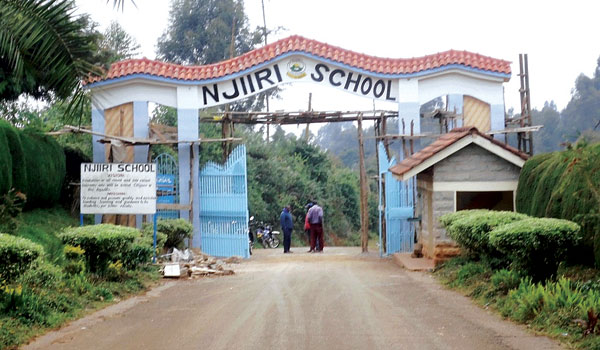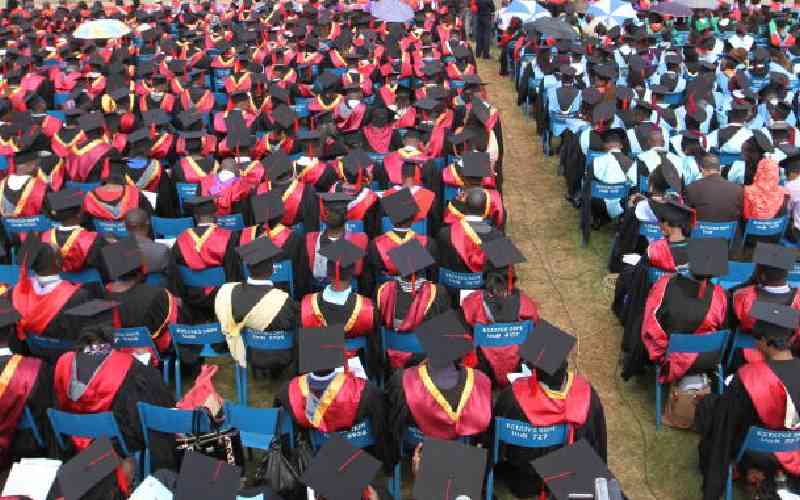 |
|
The entrance to Njiiri School named after Senior Chief Njiiri wa Karanja. |
By JAMES MWANGI
KENYA: The mighty chief Njiiri wa Karanja was a dreaded man abhorred for the atrocities he perpetrated on peasants in Fort Hall.
The colonial henchman, who ‘ruled’ between 1901 and 1952 when his son Kigo took over, was one of the most powerful figures of his time.
On a visit to his home in Kinyona village, Murang’a County, there is nothing much to show for his efforts that shaped Jomo Kenyatta’s destiny.
Born in 1866, the paramount chief is said to have married 42 wives and had tens of children. It is claimed he stopped looking for new wives when he learned a woman he was eyeing was one of his daughters.
Njiiri School, named after him, dates back to the 1950s when he requested the Fort Hall District Commissioner to start an African Government Secondary School.
Karanja and three other powerful chiefs – Michuki Njoroge, Ignatius Murai and Ndung’u Kagori – were ordered to scout for the location of the school.
After traversing the entire district they agreed on Kinyona location in Kigumo. It is alleged the land was taken away from poor residents.
Construction started in 1952, but was interrupted by the State of Emergency. Some structures were converted into a camp for homeguards. In 1957, construction resumed and the pioneer class of 25 students was admitted in 1958.
The school, which sits on a 65-acre piece of land, was officially opened on January 26, 1959 by Chief Secretary of Kenya W F Coutts at an event attended by Njiiri, then a retired senior chief. Currently it has 1,200 boys and about 9, 000 have schooled there.
Further education
The national school’s notable alumni include legislators Jamleck Kamau (Kigumo MP) and Kabando wa Kabando (Mukurweini MP), Miguna Miguna (former advisor to Raila Odinga), JK Njoroge (Education PS 1964-1969) and current Fisheries Principal Secretary Ntiba Micheni among others.
Likewise, his son Kariuki Njiiri set new course of education status in Kenya when he returned after further education overseas.
Before turning to politics he joined hands with his wife Ruth Stutts, Tom Mboya and few others in managing the famous Kenyan students airlift to the US that saw many Kenyans get advanced education.
A document on display at the Kenya National Archives, dated August 24, 1959, indicates both Mboya, a member of the Legco, and Kariuki, then a member of the Kenya Education Department, as “African associates” of the legendary airlift.
 The Standard Group Plc is a multi-media organization with investments in media
platforms spanning newspaper print operations, television, radio broadcasting,
digital and online services. The Standard Group is recognized as a leading
multi-media house in Kenya with a key influence in matters of national and
international interest.
The Standard Group Plc is a multi-media organization with investments in media
platforms spanning newspaper print operations, television, radio broadcasting,
digital and online services. The Standard Group is recognized as a leading
multi-media house in Kenya with a key influence in matters of national and
international interest.
 The Standard Group Plc is a multi-media organization with investments in media
platforms spanning newspaper print operations, television, radio broadcasting,
digital and online services. The Standard Group is recognized as a leading
multi-media house in Kenya with a key influence in matters of national and
international interest.
The Standard Group Plc is a multi-media organization with investments in media
platforms spanning newspaper print operations, television, radio broadcasting,
digital and online services. The Standard Group is recognized as a leading
multi-media house in Kenya with a key influence in matters of national and
international interest.










